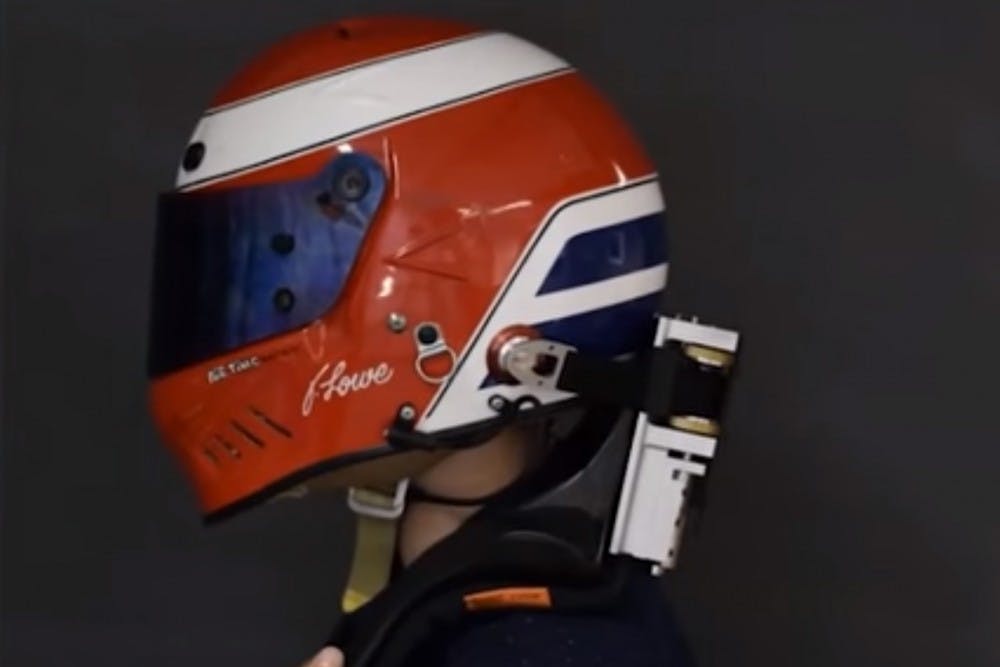A race car speeds around a track at top speeds of 200 mph. The cars stay dangerously close together to draft off one other. In a split second, a car drifting too close or a driver losing control of the wheel can cause a devastating crash. But thanks to four Penn students’ senior design project, drivers in the future could have a better chance of making it out alive.
Current Engineering graduate students Kris Li and Bahram Banisadr, 2015 Engineering and Wharton graduate Anthony Terraciano and 2015 Engineering graduate Mark Gallagher came together last year to design MechaNek, a robotic head restraint to improve safety for race car drivers, while giving them greater freedom of movement. After the senior design project window closed, they continued to work on the project until a few weeks ago.
The idea for the design came from the team’s interest in cars, particularly the knowledge that the current Head and Neck Support (HANS) devices can have many improvements.
“We are all kind of into cars and racing, and I remember watching some race, either NASCAR or F1, and hearing about how they hated using the current HANS device. It’s a super uncomfortable device, restricts your range of motion, and does not protect you perfectly well,” Banisadr said.
The HANS devices currently in use consist of a heavy carbon-fiber harness draped over the racer’s head and shoulders and attached to a cable in the back. Essentially, the restraint works like a sort of safety harness, with a set of cables attached to knobs in the back of the suit that keeps the driver’s neck from snapping forward during high-speed impacts. According to the MechaNek team, this design has not seen any large changes since the 1980s.
“We built our shoulder brace so you could strap it to an existing HANS device, but instead of the static tethers [currently used in HANS devices], we made it more similar to a seatbelt system in a car,” Banisadr said.
This “seatbelt” consists of a shoulder brace connected to a computer sensor behind the driver’s head. This computer is able to tap into all of the car’s devices, such as rear-view cameras, accelerometers and even steering wheel position to detect the first signs of a crash. The system is then able to lock the head restraint whenever a crash is imminent. The MechaNek uses a similar basic design to the HANS device, but makes use of newer technologies to make the device more bearable for the user and more aware of the car’s surroundings.
“If you’re a human in a car and you’re about to be in a crash, you’re usually able to know if you’re going to crash before it happens and, say, ‘brace for impact.’ We try to sense those initial signs of a crash and allow our device to react to that,” Banisadr said.
After developing the device, the design team entered it into a number of different design and entrepreneurship competitions across the country. One notable success was MakerCon in October, where the team won the Prototype Challenge with their first iteration of MechaNek.
After developing MechaNek, the team has decided to put the project on hold for now. Still, the team intends to profit from their work, possibly by selling it to other companies.









